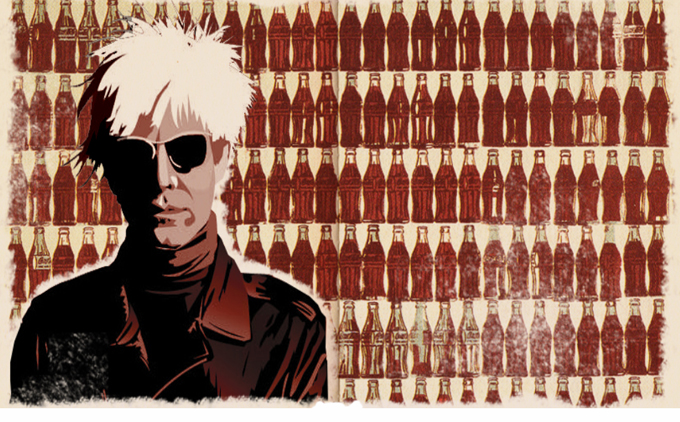
In the 1960s, Andy Warhol began to make paintings of famous American products such as Campbell's soup cans and Coca-Cola. He switched to silkscreen prints, seeking not only to make art of mass-produced items but to mass produce the art itself. He hired and supervised "art workers" engaged in making prints, films, books and other items at The Factory, his studio. A lot of Warhol's works revolve around the concept of American culture. He painted money, food, women's shoes, celebrities, newspaper clippings and everyday objects. To Warhol, these subjects represented American cultural values. For instance, Coca-Cola represented democratic equality.
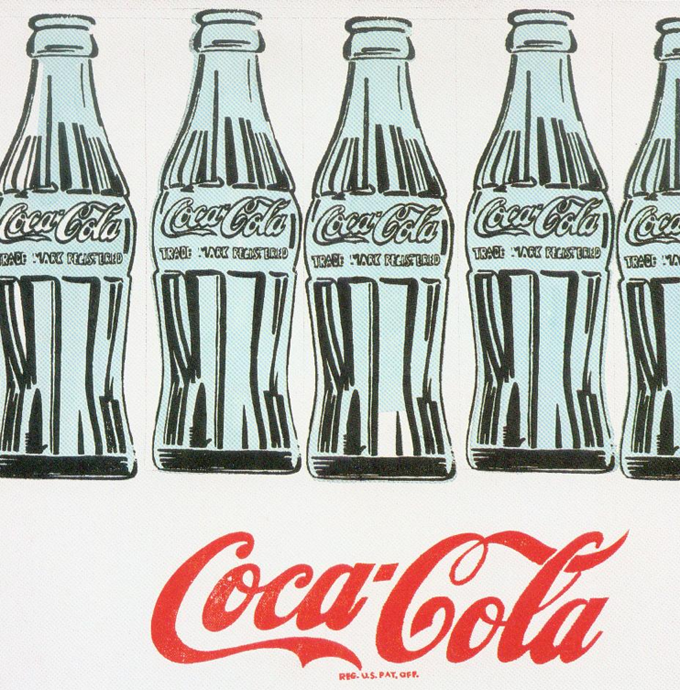
"What's great about this country is that America started the tradition where the richest consumers buy essentially the same things as the poorest. You can be watching TV ans see Coca-Cola and you can know that the President drinks Coke, Liz Taylor drinks Coke, and just think, you can drink Coke too. A Coke is a Coke and no amount of money can get you a better Coke than the one the bum on the corner is drinking. All the Cokes are the same and all the Cokes are good. Liz Taylor knows it, the President knows it, the bum knows it, and you know it." Andy Warhol
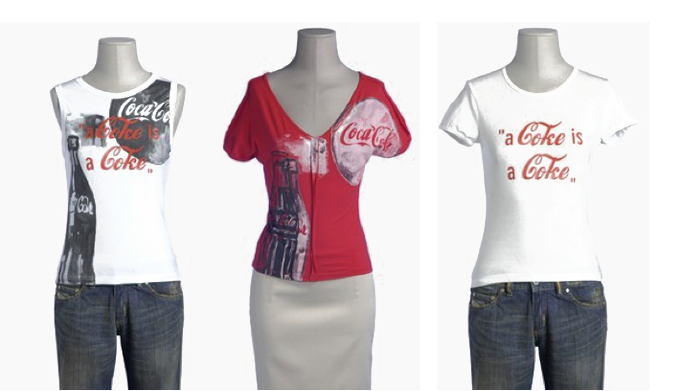
While all colas are colas, only one is Coke!
Warhol & Coca-Cola fashion collection by Cultura.
When Warhol started painting, he wanted to find a niche for himself. At that time Pop Art
-as it was later to be called- already was an experimental form used by artists as an alternative to abstract expressionism. Warhol turned to this new style where popular subjects could be part of the artist's vocabulary. His early paintings show images taken from cartoons and advertisements, hand-painted with added paint drips. He added these drips to give his paintings a seriousness by emulating the style of the abstract expressionists that were en vogue at the time. He wanted to be taken seriously and to sell his paintings.
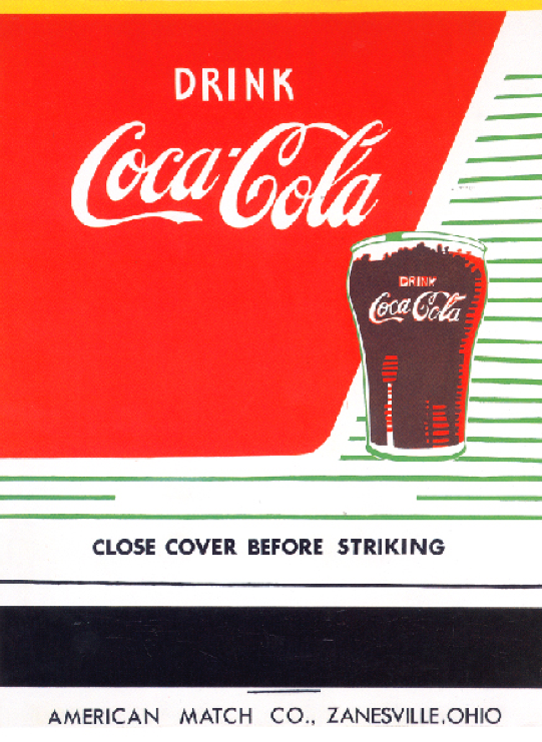
Andy Warhol’s images have appeared in magazines, on TV, clothes and billboards. Everywhere. The visual impact of his best work is stunning: fresh colours, great composition and thought-provoking subjects.
Along the way, Warhol defined modern-day USA, consciously or unconsciously exposing the ambiguities of US society. The amount of material he produced is phenomenal: film, audio, paintings and prints, books and interviews.
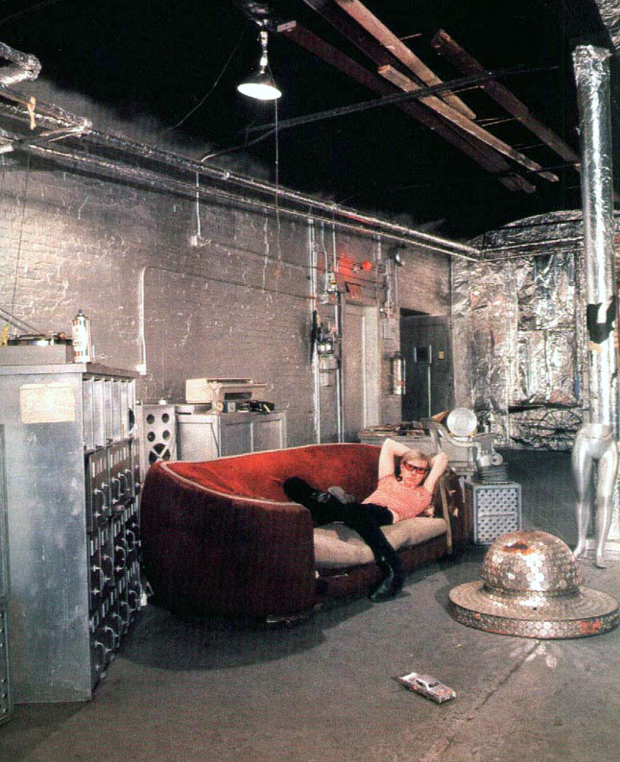
Warhol’s subjects were quintessentially American. His 210 Coca-Cola bottles depict mass production for the masses. They are produced in 1962, shortly after his silkscreen innovations allowed him to mass produce pictures of mass production.
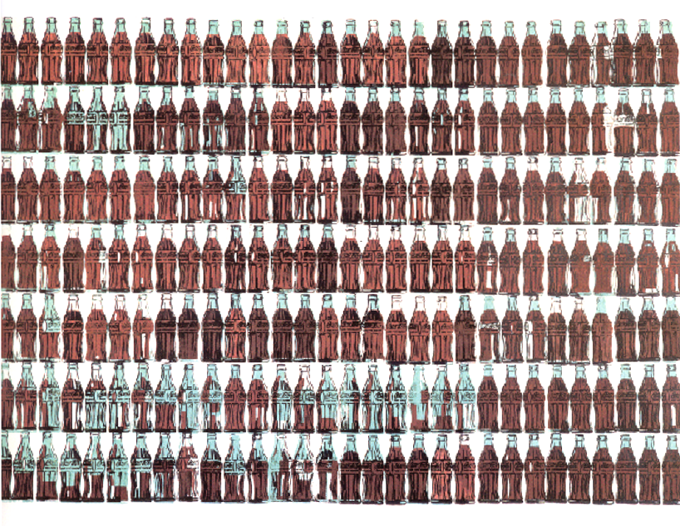
Warhol’s art is larger than life. He paints from a place far back in his mind, away from everyday ways of looking, although his subject matter is always ordinary and available. He paints real, humble things, so that they seem dreamt, visionary. “A Coke is a Coke”, Warhol said, and yet the even rows of bottles filled to varying levels in his Coca-Cola paintings are depicted with a clarity that pushes realism into a sense of wonder. These Cokes are mystical Cokes, bottled life.
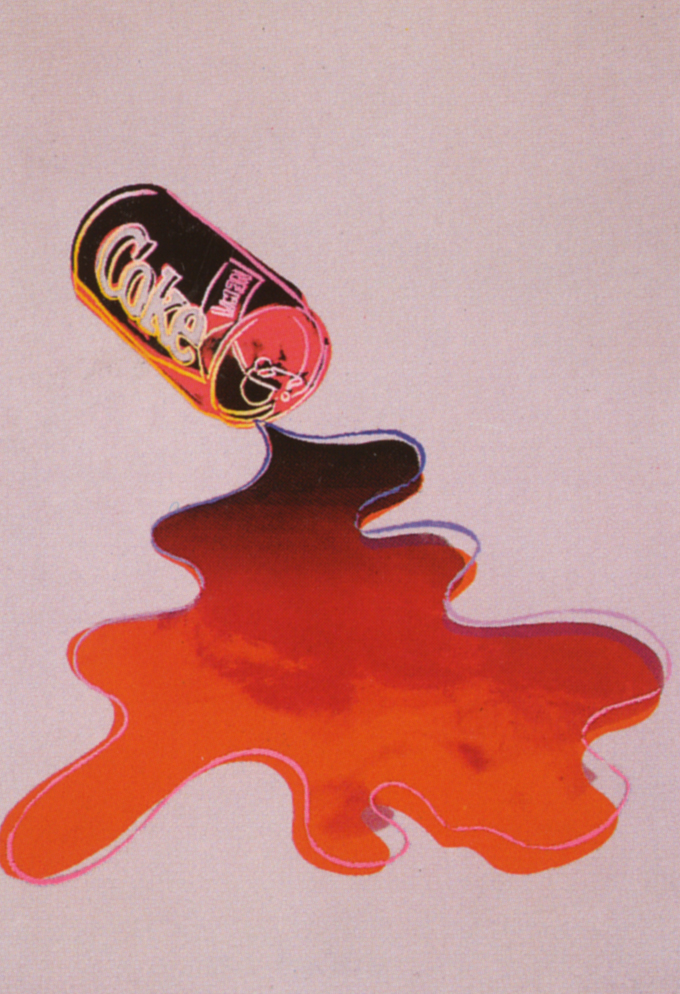
Source: "Warhol - Accident & design" by Socialism Today; "The Life & Death of Andy warhol" by Victor Bockris. All images and artworks are property of The Andy Warhol Foundation © All rights reserved.
